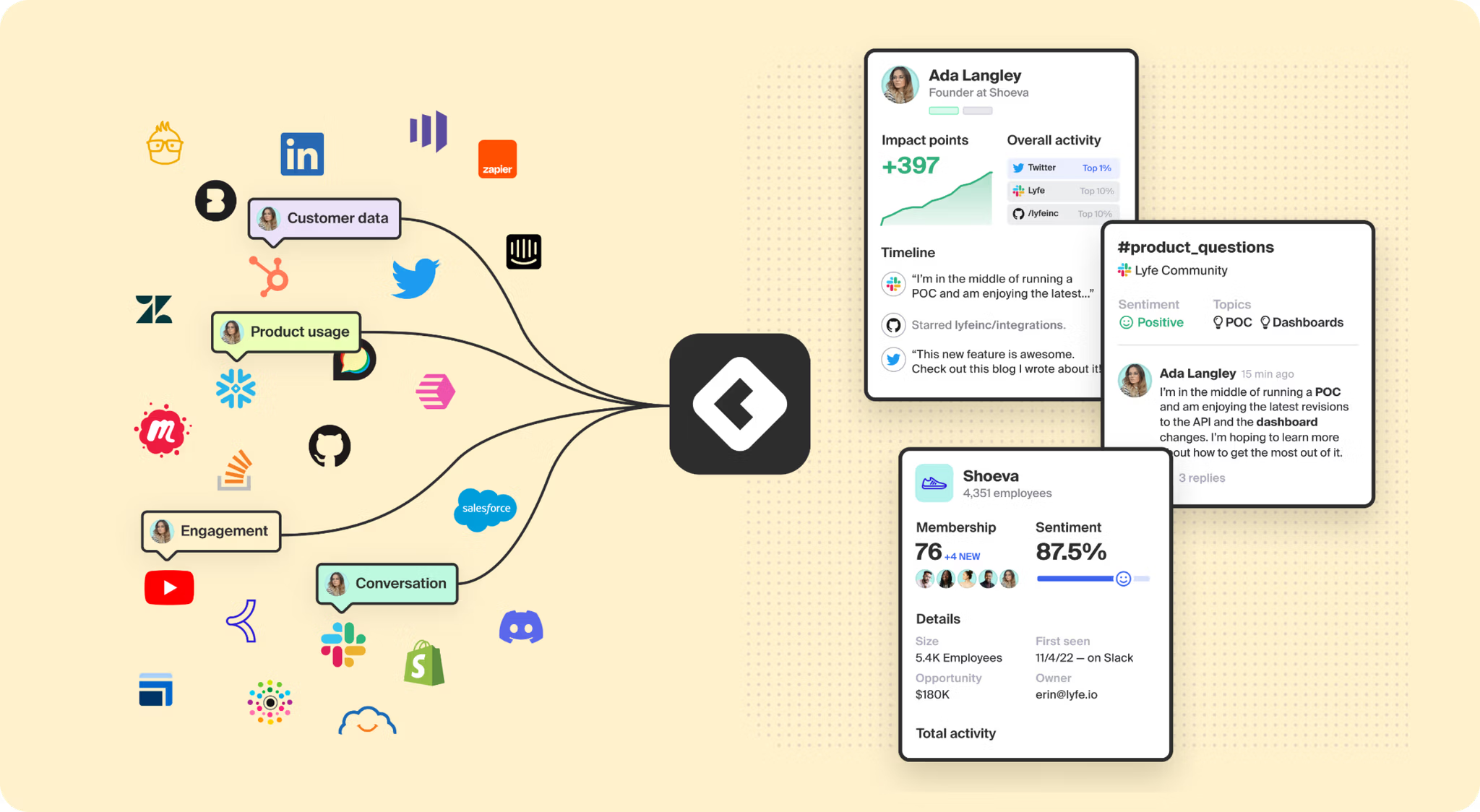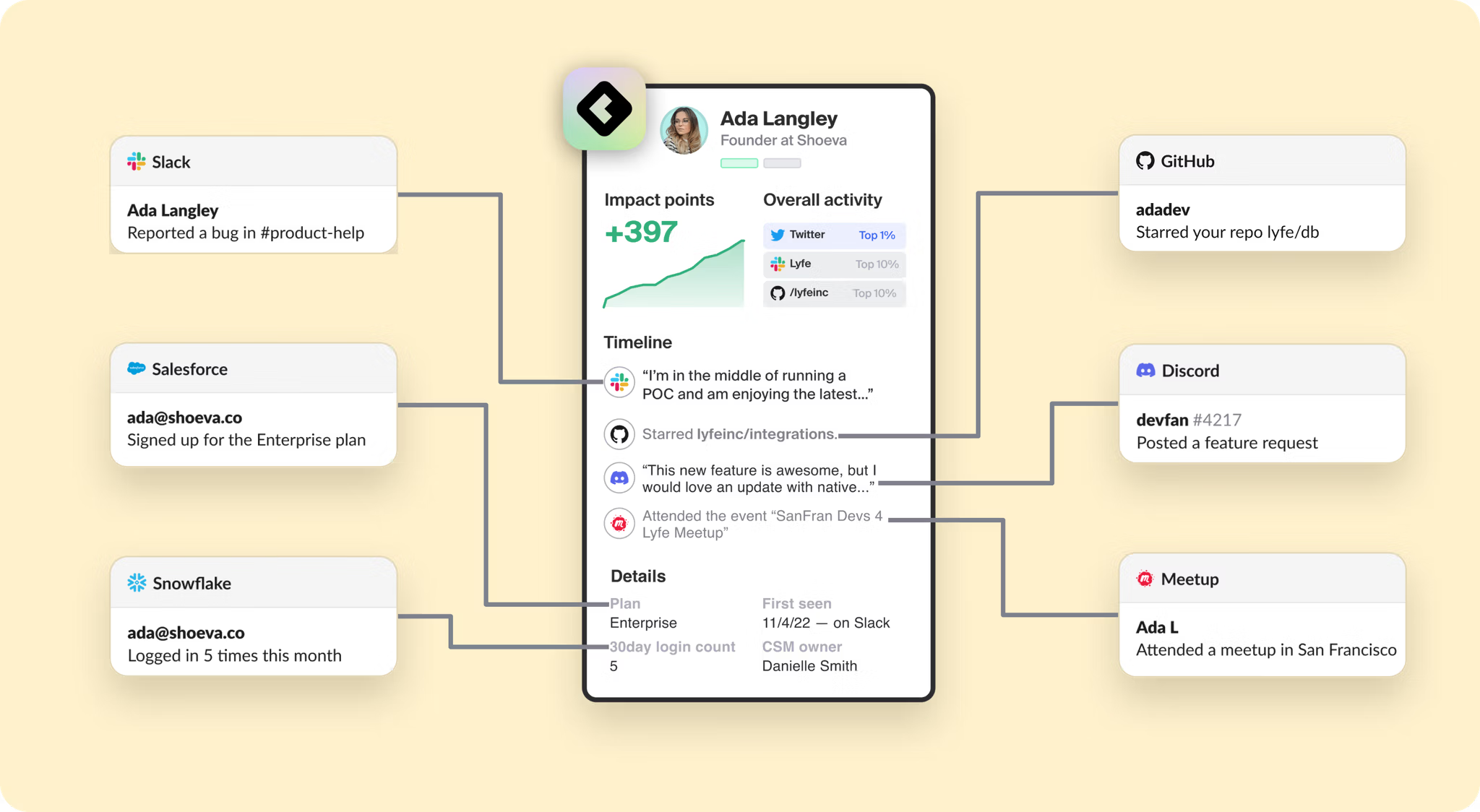Dark funnel. Dark social. Dark data.
Whatever you want to call it (and let’s be honest, all options sound equally ominous), it boils down to the same thing: buyer activity you want to see but can’t.
Much of the modern customer journey is invisible. And the trends obscuring your view aren’t slowing down—they’re speeding up.
Keep reading to learn:
- Why you should demystify your dark funnel
- What trends are clouding the customer journey
- How to shine a light on the dark funnel
You can’t act on what you can’t see
The marketing technology landscape keeps growing (this map looks more like a neo-impressionist painting than a list of martech solutions).
But that doesn’t mean it’s equipped for the modern customer journey.
The way your customers find and buy products has changed. They no longer visit your website and fill out a form—at least not at first.
Consumer trust in brands is low (less than half are seen as trustworthy) and frustration with overzealous go-to-market teams is high (64% of consumers and B2B buyers say they’re overwhelmed by brand communications).
So instead of clicking around your website and being solicited by your sales team, modern buyers do their due diligence in channels where you can’t follow (aka the dark funnel).
They sign up for free trials, ask questions on social media, source recommendations in web forums, and make purchase decisions in closed online communities. And the data you need to win their business and keep them happy stays hidden from view.
In a world where sales teams only have about 5% of a buyer’s time, getting visibility into the other 95% is business-critical.
But market trends are poised to cloud your vision further.
Check out our conversation with New Relic to learn how leading marketers overcome data silos:
Tech trends are blurring your vision
The trends stopping you from getting a clear view of the customer journey aren’t new, but they are accelerating.
Digital fragmentation
The number of digital watering holes your buyers have access to continues to grow exponentially, and each new channel creates yet another data silo.
Getting a centralized view of this activity is difficult. But separating the signal from the noise? That’s next to impossible.
Visibility into digital channels is chained to individual platforms. Even if companies have the time and people power, they’re stuck panning for gold with a hodgepodge of native tools and point solutions.
If you stumble upon business-relevant signals, there’s no easy way to tie top-of-funnel activity to the customer identities recorded in your CRM or product.
Which brings us to product data itself.
Product-led growth (PLG) has become the norm for most B2B SaaS companies (61% of companies in the Cloud 100 have a PLG strategy), but free trial sign-ups don’t automatically improve customer visibility.
Getting product analytics data into the hands of your GTM team is a struggle in and of itself. And if a person tests out your product using a personal email address, there’s no way to tell if they’re a high-fit sign-up.
Third-party cookie deprecation
Companies have been dreading the so-called cookiepocolypse since Google announced it would eliminate third-party cookies in 2020.
What was once a scary change on the horizon is now just around the corner. Nearly every major web browser is planning to get rid of third-party cookies—the primary way many companies track customers across websites.
And it’s not just cookies. Web browsers such as Brave and Firefox enable users to remove tracking parameters from URLs. Meanwhile, Apple allows users to opt out of sharing their data with advertisers.
Look no further than Meta for the result. After Apple updated its Identifiers for Advertisers (IDFA) policy to let users stop sharing their IDFA tag with advertisers (an option a majority of consumers took them up on), Meta predicted it would lose more than $10 billion in sales revenue.
In other words: Even if buyers do land on your website, you’ll soon have much less visibility into the information you need for customer acquisition.
Generative AI
ChatGPT set off an AI arms race between OpenAI, Google, and a fresh crop of open-source AI startups looking to capitalize on the trend. No matter which way you slice it, the long-term forecast isn’t rosy for website traffic.
For example, Google’s Search Generative Experience augmented the standard search engine results page (you know, the one companies have long made the cornerstone of their inbound marketing strategies?) with an AI-summarized response to queries.
Zero-click searches have been on the rise for years. Generative AI is set to eat into organic website traffic even more, making it that much harder to get a fix on buyer activity.
It’s too early to say the sky is falling, but at the very least, it will become even more important (and even harder) to rank high in search results in order to drive website traffic.
The dark funnel is a black box. Thanks to the trends above, that box is getting bigger.
How to shine a light on your dark funnel
Plenty of tools claim to shed light on your dark funnel, but they stop short of the insights you actually need.
Social listening tools are limited to certain channels and don’t reveal the who behind the what. Likewise, intent providers and account-based marketing tools offer up weak intent signals, but not the people behind them.
Here’s what you need to light up your dark funnel:

Identity
You need to be able to centralize your view into all dark-funnel activity, no matter where it’s occurring. More importantly, you need to be able to take those signals and use them to resolve customer identities and enrich customer profiles so you know exactly who’s interacting with your company.
Intent
You need to be able to take intent signals from the dark funnel and combine them with the product and customer data you already have. Siloed data doesn’t tell the whole story—the highest-quality leads are uncovered when you connect the dots between digital interaction, product usage, and customer relationship data.
Equally important is overlaying intent data with product and customer fit. You need to know if an opportunity is worth your time and energy, whether based on job title, location, organization size, industry, or some other dimension.
Context
You need to know when to reach out, where, and why. It’s not enough to know you have a hot lead—you have to understand what they’re saying, what they’re doing, and where it’s happening. And you need to be the first to know when it does.
Most importantly, you need all this rolled up in a GTM-friendly package that will empower non-technical team members to scalably acquire and retain customers.

That’s why we built Common Room. It’s the only solution on the market today that can serve up the digital interaction data buried in your dark funnel, connect it to the product and customer data you already have, and unlock the full view of buyer identity, intent, and context.
You can’t fight the future, but you can evolve with it. The customer journey is getting darker—make sure you have the tools you need to light the way.
Light up your dark funnel with Common Room
Ready to see how Common Room helps you connect digital activity with the people and accounts you care about?


